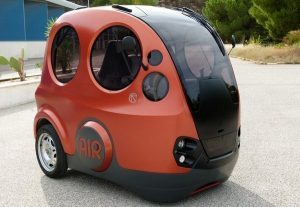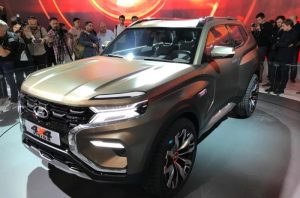Algae, chocolate and stomach gas: 5 of the most unusual types of modern fuel
 While the world community is dreaming of “jumping off the oil needle,” engineers from different countries are looking for ways to implement this idea. In recent years, they have taught vehicles to ride on electricity, natural gas, hydrogen, and even air. And today we will talk about 5 of the most unusual types of modern fuel, which in the future may become very popular.
While the world community is dreaming of “jumping off the oil needle,” engineers from different countries are looking for ways to implement this idea. In recent years, they have taught vehicles to ride on electricity, natural gas, hydrogen, and even air. And today we will talk about 5 of the most unusual types of modern fuel, which in the future may become very popular.
Compressed air
The most unusual type of modern fuel is probably compressed air. After all, the very idea of using an element for movement, which does not leave behind any emissions at all, and even practically does not cost anything, is brilliant.
Compressed air has long been used for many different purposes, for example, for working jackhammers, for refueling divers cylinders, for airguns, as well as airsoft and paintball games. But some time ago, the idea to use it in the automotive industry.
It should be noted that attempts to create vehicles that would move with the help of compressed air, were carried out in the late nineteenth century. But then not a single, indeed, a working copy of such cars was produced. So the realization of the idea appeared only in the twenty-first century.
The first production car on compressed air was the self-propelled vehicle Tata AIRPOD. It was released by the Indian company Tata, known for creating low cost and undemanding vehicles for the poorest segments of the population. So AIRPOD is designed for those who can not afford an expensive car with an internal combustion engine.
Pneumatic Tata AIRPOD has a 175-liter tank for compressed air, which allows you to drive up to 200 kilometers on one gas station, while developing a speed of 70 km / h. It is simply outstanding and environmentally friendly, and a full charge of the tank in it costs only about 1 euro and takes up to 3 minutes.
Liquid hydrogen for many decades is considered one of the main types of fuel that can defy gasoline and diesel. It cannot be said that hydrogen fuel vehicles are something unusual. They appeared throughout the twentieth century, but for many reasons have not gained wide popularity.
The idea of a hydrogen engine in recent years has received a new birth in the wake of the popularity of “green” technologies and global public concern about global warming.
Several large manufacturers now have cars with a hydrogen engine in their model range. As an example, BMW Hydrogen 7 – cars with an internal combustion engine, which can run on gasoline and liquid hydrogen.
BMW Hydrogen 7 is equipped with a 74-liter gasoline tank and a storage tank for 8 kg of liquid hydrogen. In this case, the car can use both types of fuel during one trip, switching from one to another occurs automatically, and hydrogen is the preference.
Another hybrid hydrogen-gasoline car is the Aston Martin Rapide S. It also can operate the engine on both types of fuel, and switching between them is carried out by an intelligent system for optimizing consumption and emissions of harmful substances into the atmosphere.
In the past decade, biodiesel has been increasing its presence in the green fuel market. The phenomenon is so common that much more than half of all the rapeseed grown in the world is spent on the production of biofuels.
Japan does not possess extensive fertile lands for growing rapeseed or sorghum – all fields go to the production of nutritious rice. But the Land of the Rising Sun produces a huge amount of green algae. Previously, they were eaten, and now they are also used to make biofuels based on them.
The other day it became known that in the Japanese city of Fujisawa, the passenger bus DeuSEL from the Isuzu company appeared on the streets, which drives on the fuel created on the basis of seaweed.



